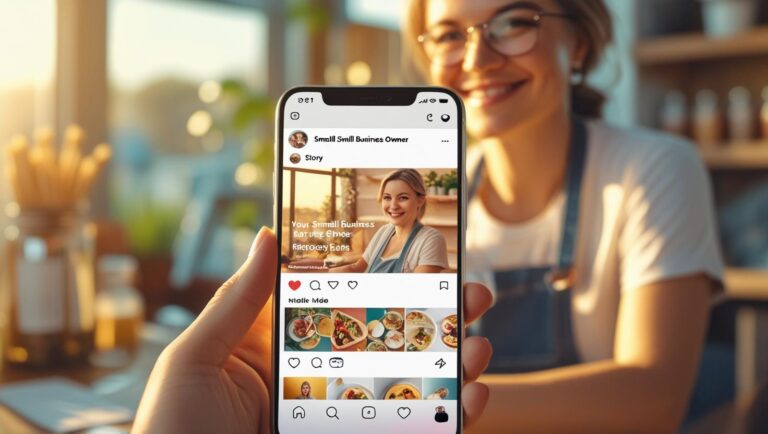Building a Magnetic Brand Presence on a Small Business Budget
Introduction
For small businesses, marketing comes with a unique set of challenges: tight budgets, intense competition, and the constant pressure to stand out in an increasingly crowded digital landscape. Large corporations have the luxury of multimillion-dollar campaigns and high-end agencies. Small businesses? You have creativity, authenticity, and agility on your side.
Building a strong brand presence may feel like a luxury reserved for big players, but in reality, it’s your lifeline to attract, retain, and convert customers. A magnetic brand presence doesn’t require expensive ads or glossy campaigns—it requires clarity, consistency, and clever use of resources.
This article will guide you through practical, cost-effective strategies to create a brand that feels professional, approachable, and memorable. From defining your identity to leveraging digital channels and smart content strategies, you’ll learn how to make your brand shine without breaking the bank.
What Is a Brand Presence, Really?
Your brand presence is more than a logo or a color palette—it’s how your business shows up across all touchpoints. It’s the combination of what people see, hear, and feel when they interact with your business. It’s the impression that sticks in their minds long after they scroll past your social media post or walk past your storefront.
Think of your brand presence as your business’s personality broadcast into the world. If it’s inconsistent, confusing, or invisible, potential customers won’t connect, no matter how good your product or service is. Conversely, a well-crafted brand presence fosters recognition, trust, and loyalty, turning casual visitors into long-term advocates.
Nail Your Brand Identity Before Spending a Cent
Before diving into campaigns or social media tactics, take the time to define your brand’s foundation. Without a strong identity, your messaging can feel scattered, and your audience may struggle to understand what makes you different.
Start by defining your brand promise. This is the guarantee your customers can expect every time they interact with you. It could be fast delivery, personalized service, exceptional quality, or a unique customer experience. For example, a local bakery might promise that every pastry is baked fresh daily using ethically sourced ingredients.
Next, get crystal clear on your target audience. Knowing who you’re speaking to allows you to tailor your messaging and choose the right channels. Consider demographics like age, location, interests, and buying habits, but also focus on psychographics: what motivates them, what challenges they face, and what solutions they are seeking.
Your visual identity is the next piece of the puzzle. Logos, colors, fonts, and imagery should be consistent across every touchpoint. A cohesive visual identity creates recognition and professionalism. You don’t need an expensive design agency; platforms like Canva or free logo tools can help you create a polished look.
Finally, define your brand voice. Are you casual and friendly, formal and authoritative, or somewhere in between? Your voice should reflect both your business values and your audience’s expectations. This voice will guide all communications, from social media posts to email newsletters, ensuring a consistent personality that your audience can relate to.
Choose Digital Channels Wisely
Small businesses often make the mistake of trying to be everywhere online. In reality, spreading yourself too thin can dilute your impact. Focus on the channels where your target audience is most active.
Facebook remains a powerhouse for local businesses, especially for community-oriented or older audiences. Local cafés, boutiques, and service providers often find it easier to engage with customers through Facebook groups, posts, and paid promotions.
Instagram is ideal for visual storytelling. Retail, lifestyle, food, fashion, and creative services thrive here. The platform allows you to showcase your products, behind-the-scenes stories, and day-to-day business life in a way that builds connection.
LinkedIn is essential for B2B businesses, consultants, and professional services. Thought leadership posts, case studies, and professional insights perform well here, establishing credibility and networking opportunities.
Google Business Profile (formerly Google My Business) is a free, must-use tool for local search visibility. Optimizing your profile helps customers find you, read reviews, and engage directly with your business without spending a cent.
Focus on mastering one or two platforms before expanding. Quality engagement on the right channels always outweighs superficial activity everywhere.
Content That Builds Connection Without Breaking the Bank
Content marketing is about delivering value, not just pushing sales messages. The best content for small businesses is authentic, useful, and shareable.
Educational posts are highly effective. Share tips, tutorials, and advice related to your products or services. For instance, a local hardware store could post DIY home improvement tips, positioning themselves as a helpful expert rather than just a seller.
Behind-the-scenes content builds personality and trust. Show your team at work, highlight your production process, or give a peek into how you solve customer problems. People love seeing the humans behind the brand.
User-generated content is gold. Encourage happy customers to share photos, reviews, or videos featuring your products. Reposting this content not only provides social proof but also strengthens your relationship with loyal customers.
Short videos and Reels are now essential, and they don’t need to be expensive. Using your smartphone, you can create simple demonstrations, tutorials, or stories about your products. For example, a fitness studio could share a 30-second demonstration of a workout move or highlight a client’s transformation.
Consistency is key. You don’t need daily posts, but regularity builds familiarity and trust. Free scheduling tools like Buffer, Later, or Facebook’s Creator Studio help maintain a consistent presence without overwhelming your team.
Smart Branding Tools That Won’t Break the Bank
Small businesses have access to a range of tools that make branding easier and more affordable.
Canva is invaluable for creating graphics, social media posts, flyers, and even simple videos. Templates make design simple, even if you’re not a designer.
Mailchimp or Brevo offer email marketing automation with free plans suitable for small lists. Email is one of the highest ROI marketing channels, making these tools essential for nurturing leads and driving repeat business.
Free stock photos from Unsplash or Pexels can elevate your visuals without costly photo shoots.
Social media scheduling tools like Buffer or Later save time by allowing you to plan posts in advance, ensuring regular engagement even during busy periods.
Even small investments in these tools can make your brand appear polished and professional while keeping costs manageable.
Engage, Don’t Just Broadcast
Marketing isn’t a one-way street. Small businesses have a distinct advantage here—the personal touch. Customers notice when a business interacts authentically, rather than simply broadcasting messages.
Reply to comments and messages promptly. Engagement shows that you value your audience and care about their experiences.
Collaborate with other local businesses. Joint giveaways, shout-outs, or community events increase visibility and demonstrate a sense of community.
Ask for feedback and reviews, then act on them. Customers appreciate businesses that listen and evolve based on their input, reinforcing trust and loyalty.
Measure What Matters
It’s easy to get distracted by vanity metrics like likes or follower counts. Instead, focus on metrics that reflect real business impact.
Track website traffic, noting where visitors come from, what pages they view, and how long they stay. Engagement rates such as comments, shares, and DMs reveal how content resonates. Conversion actions—calls, bookings, purchases—show whether your branding efforts translate into revenue.
Free tools like Google Analytics, Facebook Insights, and LinkedIn Analytics provide sufficient data to make informed decisions. Regularly reviewing this data allows you to adjust strategy, invest in what works, and discontinue what doesn’t.
Offline and Online Branding Synergy
Your brand isn’t limited to digital spaces. Signage, packaging, business cards, and the overall customer experience must align with your online presence. A seamless offline and online experience reinforces trust and strengthens your brand identity.
For example, a café with branded takeaway cups, uniformed staff, and consistent social media visuals creates a cohesive brand impression. Every touchpoint should communicate your values, style, and quality standards.
Common Pitfalls Small Businesses Make
Small businesses often stumble by trying to do too much too quickly. It’s better to focus on a few well-executed strategies than overwhelm your team and audience.
Copying big brands instead of cultivating authenticity can make your business blend in rather than stand out. Customers notice genuine voices and stories.
Neglecting mobile optimization is another common mistake. Most customers will interact with your brand on phones, and a poor mobile experience can erode trust quickly.
Finally, ignoring retention and follow-up strategies limits growth. Marketing doesn’t stop at acquisition; turning customers into loyal advocates is the ultimate goal.
Conclusion: Start Small, Be Consistent, Think Long-Term
Building a magnetic brand presence is a marathon, not a sprint. Small businesses have advantages that large corporations often lack—agility, authenticity, and the ability to connect personally with their customers.
Focus on defining your brand identity, mastering the right digital channels, creating content that builds connection, and engaging authentically with your audience. Use affordable tools to enhance your professionalism and track meaningful metrics to guide your strategy.
Consistency and authenticity will pay off faster than flashy, expensive campaigns. You don’t need to be perfect; you just need to show up, tell your story, and make every customer interaction count.
With a clear strategy, creative execution, and commitment to authentic engagement, even small businesses with limited budgets can build a magnetic brand presence that attracts loyal customers and drives long-term growth.



